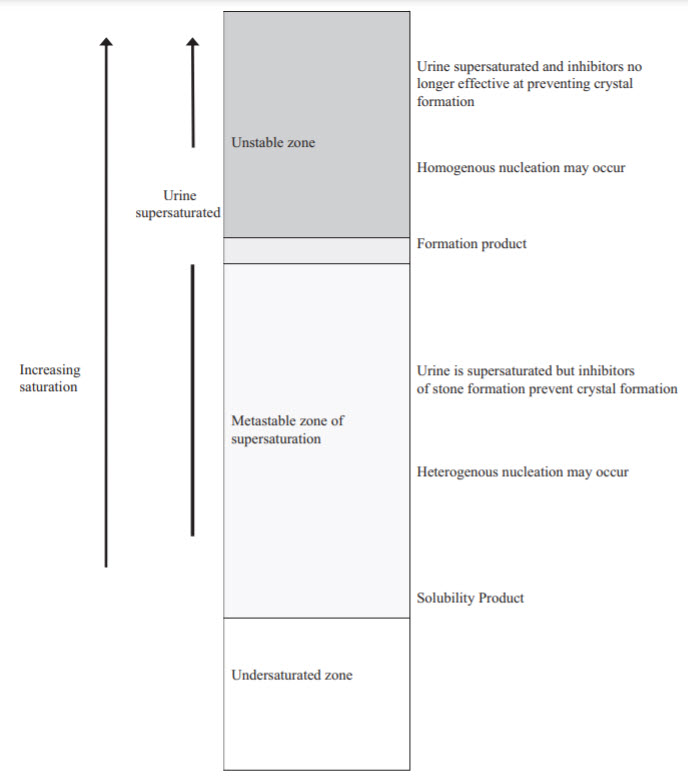Question 2#
The following are recognised inhibitors of stone formation in the metastable zone except:
A. Tamm-Horsfall proteinB. Citrate
C. Nephrocalcin
D. Uropontin
E. Oxalate
Correct Answer is E
Comment:
Answer E
Stone formation depends on the concentration of precipitating substances in urine and reflects a complex relationship between factors that can be categorised into either promoters of crystallisation or inhibitors of crystal formation and aggregation (figure below).
Urine is ordinarily supersaturated with calcium oxalate and may be supersaturated with other compounds such as calcium phosphate and sodium and ammonium urate. However, supersaturation is variable and in the metastable zone crystal aggregation will not occur unless induced by epitaxy (one salt inducing the precipitation of another salt) or heterogenous nucleation caused by the influence of foreign particles; for example, bacteria acting as niduses for stone formation.
Crystals of one salt have been shown to induce the precipitation of crystals of other salts by a process referred to as epitaxy. For example, calcium phosphate or calcium carbonate crystals may stimulate precipitation of calcium oxalate crystals and thereby promote stone formation. It is believed that the presence of endogenous compounds such as magnesium, zinc, fluoride and citrate act as inhibitors of stone crystallisation and are the reason that stones do not generally form in urine despite its supersaturation.
Tamm-Horsfall protein, also known as uromodulin, is produced by the thick ascending limb of the loop of Henle. Its role in urolithiasis remains uncertain but it may act as both a promoter and inhibitor of stone formation. Uropontin and nephrocalcin are also glycoproteins that are thought to have an effect on kidney stone formation.

Relationship between urinary saturation and promoters and inhibitors of stone formation.